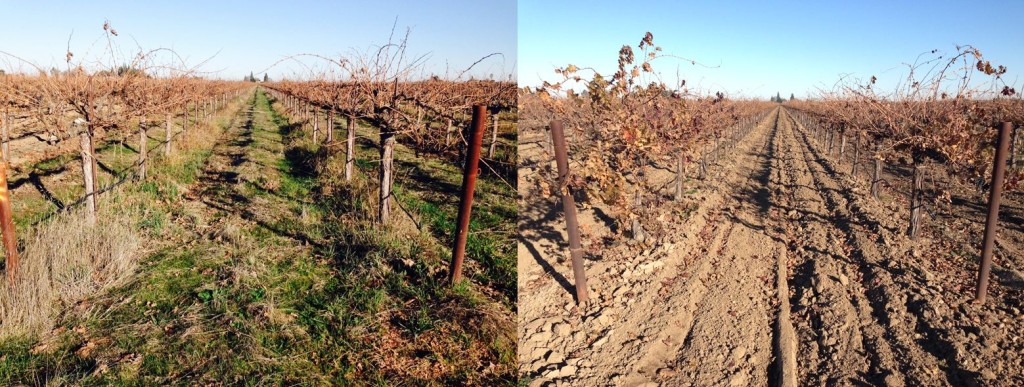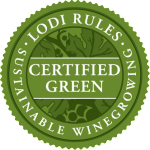 Growers can learn how to improve the health of their soils with the help of the newly revised book “Building Soil For Better Health”, written by two prominent soil scientists. The book is available for free download by clicking HERE.
Growers can learn how to improve the health of their soils with the help of the newly revised book “Building Soil For Better Health”, written by two prominent soil scientists. The book is available for free download by clicking HERE.
Managing for soil health means caring for the chemical, biological and physical quality of your land. In recent years, most growers have done a good job on the chemical issues, by monitoring for pH and nutrient levels with soil tests.
In the years to come, the challenge will be to expand that care to the microbial populations and soil structure. Kind of like health care reform for soil. Well, maybe not, because you don’t need Congress to help you do this.
The new edition of “Building Soils for Better Health,” was published by the Sustainable Agriculture Research and Education (SARE) outreach office of the USDA.
__________________________________________________________________________________
Vern Grubinger is a vegetable and berry specialist with University of Vermont Extension. This article first appeared in Farming: The Journal of Northeast Agriculture and later in the No-Till Farmer blog.
__________________________________________________________________________________
The Chair of the Department of Crop and Soil Sciences at Cornell University, Harold van Es is a professor of soil and water management. He also directs the Cornell Initiative on Computational Agriculture. Fred Magdoff is professor emeritus of plant and soil science at the University of Vermont and an adjunct professor of crop and soil science at Cornell University.
Their book clearly explains the principles and practices of soil stewardship that can be applied to your farm. The following information comes from that book, with permission.
__________________________________________________________________________________
This article was originally written with vegetable crop farmers in mind, but many of the core principals and practices of soil stewardship discussed here can also be applied to winegrapes.
__________________________________________________________________________________
What’s wrong with my crop?
What many people think are individual production problems may just be symptoms of a degraded, poor-quality soil. These symptoms are usually directly related to depletion of soil organic matter, lack of a thriving and diverse population of soil organisms and compaction caused by use of heavy field equipment.
Farmers have been encouraged to react to individual symptoms instead of focusing their attention on general soil health management. A new approach is needed to help develop farming practices that take advantage of the inherent strengths of natural systems. In this way, we can prevent the many symptoms of unhealthy soils from developing, instead of reacting after they develop.
Six ways to improve soil health
Most types of agriculture soil health can be improved through six main approaches:
- reducing tillage
- avoiding soil compaction
- growing cover crops
- better crop rotations
- organic amendments
- inorganic amendments.
You can maintain or increase soil organic matter more easily when you use reduced-tillage systems, especially no-till.
The decreased soil disturbance keeps biological activity and organic matter decomposition near the surface and helps maintain a soil structure that allows rainfall to infiltrate rapidly.
Leaving residue on the surface, or applying mulches, has a dramatic impact on soil biological activity. It encourages the development of earthworm populations, maintains soil moisture and moderates temperature extremes.
Compared with conventional tillage, soil erosion (water, wind or tillage) is greatly reduced under minimum-tillage systems, which help keep organic matter and rich topsoil in place. Any other practices that reduce soil erosion, such as contour tillage, strip cropping along the contours and terracing, also help maintain soil organic matter.
Use cover crops when soils would otherwise be bare to add organic matter, capture residual plant nutrients, and reduce erosion. Cover crops also help maintain soil organic matter in resource-scarce regions that lack possible substitutes for using crop residues for fuel or building materials.
If at all possible, use rotations that use grass, legume or a combination of grass and legume forage crops, or crops with large amounts of residue as important parts of the system. Leave residues from annual crops in the field, or, if you remove them for feed, composting or bedding, return them to the soil as manure or compost.
Raising animals or having access to animal wastes from nearby farms gives you a wider choice of economically sound rotations. Those that include perennial forages make hay or pasture available for use by dairy and beef cows, sheep and goats—and nowadays even poultry.
__________________________________________________________________________________
Lodi Rules for Sustainable Winegrowing certified growers might draw ideas from this article to score points toward certification in the Soil Management Chapter (Chapter 4) and the Ecosystem Management Chapter (Chapter 3).
__________________________________________________________________________________
In addition, on mixed crop-livestock farms, animal manures can be applied to cropland. It’s easier to maintain organic matter on a diversified crop-and-livestock farm, where sod crops are fed to animals and manures returned to the soil.
Compared to crop farms, fewer nutrients leave farms when livestock products are the main economic output. Growing crops with high quantities of residues plus frequent use of green manures and composts from vegetative residues helps maintain soil organic matter and soil health even without animals.
Make progress, not perfection
There are many options for making soil management changes in different types of farming systems.
A good analogy is to think of your soil as a bank account with credits and debits. The credits are management practices that improve soil health, like manure additions, reduced tillage and cover crops. The debits are the ones that degrade the soil, like compaction from field traffic and intensive tillage.
One farming system may result in a different balance sheet than another due to specific constraints. For example, a daily harvest schedule means that you cannot avoid traffic on wet soils, and small-seeded crops require intensive tillage, at least in the planting row in order to prepare a seedbed.
Strive to optimize the system. If a “bad” practice — such as harvesting in a wet field that contains ripe crops that might spoil if you wait for the soil to dry — is unavoidable, try to balance it with a “good” practice, making your soil health account flush.
Whatever crops you grow, when you creatively combine a reasonable number of practices that promote high-quality soils, most of your farm’s soil health problems should be solved along the way and the yield of your crops should improve.



